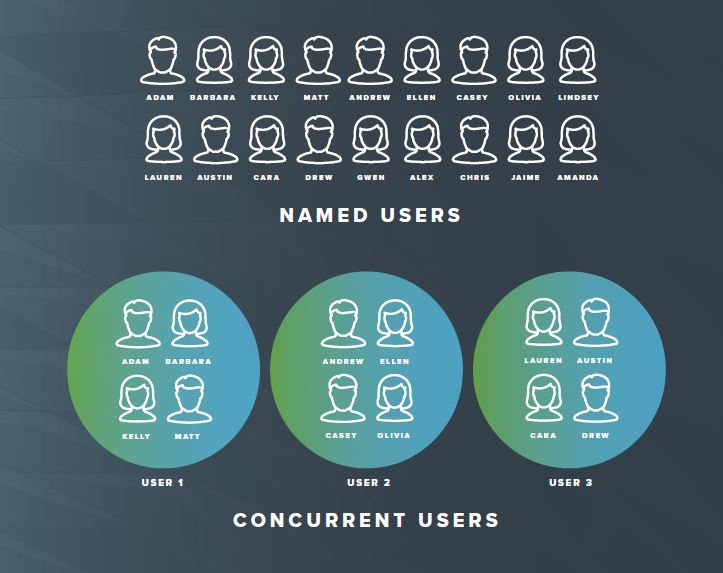5 Steps for More Accurate eDiscovery Project Scope
As originally published on completelegalkc.com
6 min read
ONE Discovery
:
Sep 7, 2018 12:00:00 AM

By Jeff Dreiling, co-founder, Complete Legal
Before jumping into the meat of the topic, I challenge you to answer this question: “Does your legal department have someone with the subject matter expertise to build, lead and motivate an in-house team; to direct the discovery timeline; and to access your outside counsel? “
If the answer is “Yes”, please read on. If the answer is “I’m not sure” or “No”, I encourage you to identify or retain that person before getting ahead of yourself. If you go through the time, expense and effort to bring eDiscovery processes in-house, make sure you have a leader in place who will ensure your new processes are only deviated from as necessary.
To begin exploring the question of insourcing versus outsourcing (after you’ve identified who will lead the effort) consider the motivations your organization has for beginning this process.
In the past four years, my litigation support company has helped corporations and law firms, large and small, evaluate this decision. We are a provider of these services so that may sound surprising. But the truth is some clients have unique circumstances that, when addressed by bringing all or part of the eDiscovery process in-house, create deeper and better relationships with their service providers.
When meeting with a client on this subject our first question is, “What processes or systems do you have in place to measure success?” In other words, what metrics (and systems to accurately track these metrics) do you have in place to objectively judge the success or failure of this initiative?
In-house legal teams face a myriad of challenges on a daily basis and play a crucial role in the direction of many corporations. At the end of the day, however, on a spreadsheet, they are simply a cost center. So before digging in too deep on the particulars, it is our job to ensure that the potential savings in cost or the increase in efficiency will justify the pain and expense of change.
The largest cost to bringing eDiscovery in-house is not the cost of the software platform or even the hardware expense. It is instead the pain and expense to bring qualified operators and support personnel into the department and to manage them on a daily basis. For this reason, you must first identify what in-house resources exist that can be trained to efficiently operate the software. This is not as simple as giving it to the young person your IT department just hired. Just because someone is an IT professional does not mean they have the skills, knowledge and background to be a successful data processor, project manager or hosting analyst. An IT background helps bridge the knowledge gap in most cases, but it is far from a guaranteed win.
Once you have the correct person to lead the in-house services team and have identified current personnel (or hire new employees) for execution, there are three major areas you should evaluate when considering bringing services in-house:
Unless your organization is a serial litigant with huge amounts of data to be collected and processed daily, most organizations decide to bring only portions of the eDiscovery process in-house and leave other portions with vendors. Your industry will likely play a key role in your decision as well. If you are in financial services, railroad, healthcare or another highly regulated industry, some of your decision points will vary from the standard.
eDiscovery service providers of all sizes continually struggle with the proper level of staffing for data collection specialists. With over 250 law firms and corporations counted as clients, we continually evaluate what type of collections we can and will support, how many employees to get and keep certified and how to gain value from those employees when they have no data to collect.
I know from experience that the rule of thirds applies here:
Therefore, unless you have steady and reasonably timed needs, data collections, especially mobile device and IOT (internet of things), should be the last function brought in-house. Instead, work closely with the IT department to gain control over the collections function through a plan to use current software and personnel to bring email and file share collections in-house as a starting point.
Most of today’s email platforms (Office 365, Gmail, etc.) offer direct and easy-to-understand ways to isolate custodians, execute date restrictions and keyword searches and export potentially responsive emails. Using these tools to your advantage is an easy and painless way to begin in-house data collections. That being said, retain a good and reputable expert for mobile devices and more complex work or cases where you need boots on the ground outside of your office.
The processing of native files (normalizing data so it can be searched and reviewed in a common format) is the function most commonly identified as an opportunity to gain efficiencies. It is the single largest upfront cost when beginning a new document review. It is also where eDiscovery platforms have come the furthest. With the advent of the private cloud space (Amazon Private Web, Google Cloud, Microsoft Azure) quite a bit of the upfront hardware and software investment can be offset. The process is still extremely important and by no means foolproof, but the potential cost savings make this the low hanging fruit of insourcing eDiscovery.
Evaluating your processing platform options is the most crucial part of this decision process. There are dozens of software providers on the market that make fantastic claims through their dynamic marketing departments. The truth is that after nearly two decades in eDiscovery, no software can do it all. There is no EASY button. Each dataset contains anomalies. Behind each successful eDiscovery processing team are people that work around “exceptions” and “errors”. For this reason, having highly trained and qualified members on your in-house team is necessary to perform this function.
The cost-saving measurement in this area is easy to gather and evaluate. The efficiencies gained are often large. Abbott Laboratory’s recent spinoff, AbbVie, for example, famously brought processing in-house, yet outsources some collections and their hosting/review. They reportedly process multiple terabytes of data on a weekly basis and keep their custom-built data center humming around the clock. This comes at a large upfront expense in hardware, software and human capital. Overall though, it is seen as a rousing success and is a model for many organizations attempting to do the same.
The last major function within eDiscovery (and the hardest to evaluate) is database hosting, review design and management and production. As easy as the direct cost-benefit analysis is to perform on processing, it is equally hard to quantify these functions. A lot of today’s software platforms market processing and hosting all-in-one packages. But why pay for something all the time and only use it part of the time? The answer comes back to where we started. Do you have, or are you able to attract, the people who make these functions work?
In order to successfully host databases, an organization needs:
The last function is usually the last one most organizations decide to insource. It is beyond a full-time job to support multiple cases, with different outside counsel, looking for different key/hot documents and managing the ever-changing timelines that often accompany litigation. Though often minimized, these functions are the face of your eDiscovery efforts.
There is no right or wrong answer to the question of insourcing versus outsourcing. In many cases, it makes sense to control all or part of the eDiscovery process. In others, going through the exercise is a great way to assess the value you receive from your current service provider(s). The one thing that holds true, no matter the size of your organization, the type of litigation you most commonly see, or your available budget, without the proper person leading the process and building their own team, success is extremely elusive. If you start with people, and end with people, your odds of success will increase exponentially.
 Jeff Dreiling is the Co-Founder of Complete Legal, a boutique and customized solutions provider. Complete Legal serves a wide variety of clients, from solo attorneys to large corporate firms, acting as their litigation support department and providing a competitive advantage throughout the lifecycle of their legal matters. Jeff’s 17 years in the legal support industry include a multitude of experiences consulting, speaking, and writing on eDiscovery and ESI for hundreds of clients.
Jeff Dreiling is the Co-Founder of Complete Legal, a boutique and customized solutions provider. Complete Legal serves a wide variety of clients, from solo attorneys to large corporate firms, acting as their litigation support department and providing a competitive advantage throughout the lifecycle of their legal matters. Jeff’s 17 years in the legal support industry include a multitude of experiences consulting, speaking, and writing on eDiscovery and ESI for hundreds of clients.

As originally published on completelegalkc.com

Data sprawl continues to be an issue that eDiscovery professionals struggle with. Take a look at how data multiplies in the traditional eDiscovery...

The cost of eDiscovery technology can be exorbitant, especially when that big case comes in. Getting away from named user licenses is one way to...